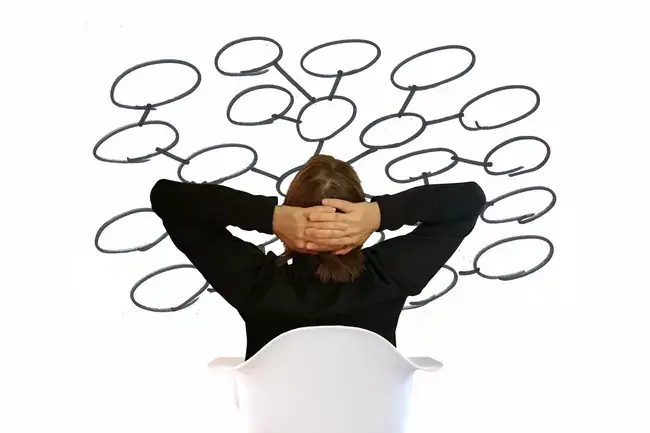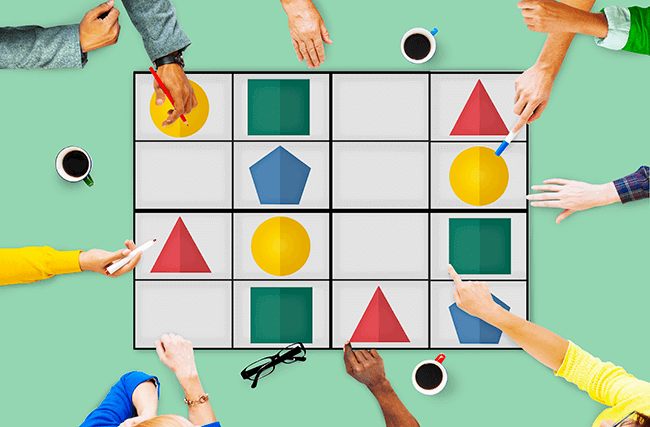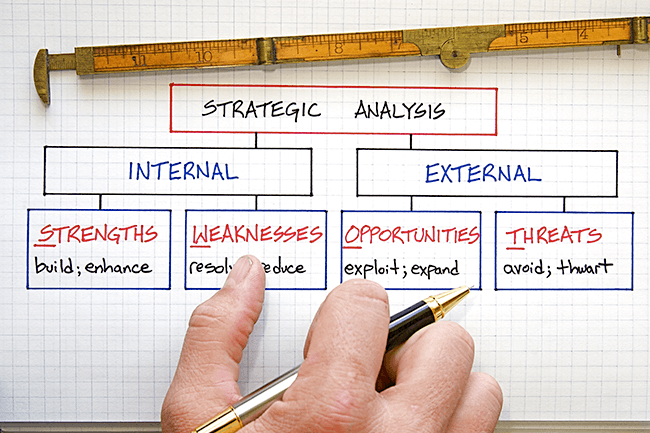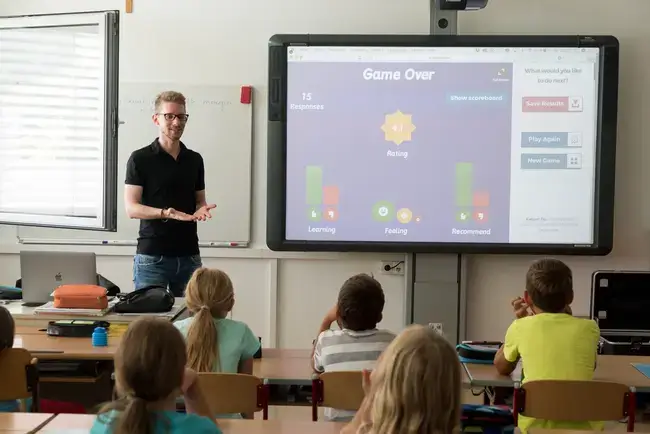How to Optimize a B2B Customer Journey Map

Want to create a B2B customer journey map but don’t know where to start? It can be tough to create a customer journey map that is effective for targeting B2B customers.
Most businesses struggle to create a customer journey map that is effective for their B2B clients. This process can be difficult and time-consuming, but it’s worth it in the end.
Follow these simple tips and you’ll be on your way to creating an optimized customer journey map that will help you close more deals with B2B clients.
Read on to find out more:
Define Your Buyer Persona
Who do you want to sell your product to? Your buyer persona is who you want to buy your product. To create an effective buyer persona, you need to understand your target audience’s demographics, needs, and pain points.
Once you have this information, you can create a customer journey map that outlines the steps your buyer persona will take on their path to purchase.
By understanding your buyer persona, you can create targeted content that speaks to their specific needs and pain points, making it more likely that they’ll engage with your brand and convert into a paying customer.
When and How to Create Customer-Journey Maps
A customer-journey map is a way to understand what your customer does and thinks when they are thinking about buying something from you. You can make a customer-journey map at any time.
But it is usually best to do it after you have already done some research on your customers and what they need. This will help you make sure that the customer-journey map is as accurate as possible.
There are different ways to make a customer-journey map. You can use online tools or do it yourself with a whiteboard or piece of paper.
The most important part is making sure that everyone who needs to know about the customer’s journey understands the map.
Outline the Stages of the Buyers Journey
The buyer’s journey is what happens when someone buys something. There are three parts:
1. The Problem
The first part is when the person realizes they need or have a problem. They might realize that their current product isn’t good enough and that a competitor has a better solution.
2. Comparison
The second part is when the person does research to compare different solutions. They might read reviews, talk to friends or experts, or compare prices.
3. Influence
The third part is when the person chooses a product or service. They might be influenced by factors like price, brand reputation, or customer service.
Identify Touchpoints Along the Journey
As you work to identify the touchpoints along the buyer’s journey, it’s important to keep the buyer’s needs in mind. What are they looking for at each stage of the journey?
How can you best meet those needs? Keeping the buyer’s needs top of mind ensures that each touchpoint is designed to meet their specific needs.
This, in turn, will help you create a seamless and enjoyable journey that ultimately leads to a sale.
Create Content for Each Stage of the Journey
You need to make content for each part of the journey. The first step is to find all the places where the person looking to buy something from you will see your brand.
This could be your website, social media, or email list. Once you know all of those places, you can start making content for each stage of the journey.
The awareness stage is when you help the buyer know that they need something. You can do this by making blog posts, pictures, or videos that teach them about the thing they need.
In the consideration stage, your goal is to help the buyer look at their options and decide which one is best for them.
You can do this by creating guides that compare things, demonstrations of your product, or stories of how your product or service has helped others.
Finally, you want to help the buyer make a purchase. You can do this by giving them coupons, free trials, or money-back guarantees that eliminate any risk associated with buying from you.
By creating content for each stage of the journey, you can ensure that you’re always providing value to the buyer and moving them closer to a purchase.
Measure and Optimize Your Results
It’s important to measure your results and make changes to improve them. This means paying attention to how many customers you get and making changes to get more.
This might involve changing your content, your process, or anything else that can help. Whatever you do, make sure you’re constantly measuring and adjusting to get the best results and conversion rates possible.
Improve Customer Experience
It is important to follow up with customers after they purchase something from you. This will help them have a good experience and maybe even buy from you again.
You can follow up by sending a thank-you note or email, keeping in touch regularly, and being available if they have questions or problems.
Send a Thank-You Note
A simple thank you note can make a world of difference for your customers. They take the time to purchase your product or use your service, so the least you could do is take a few minutes to write a personal thank-you note.
In the note, be sure to mention something specific about their purchase. This will show that you took the time to notice what they bought and that you appreciate their business.
A thank-you note is a small gesture that can go a long way in making your customers feel appreciated. So next time someone does business with you, be sure to send them a handwritten thank-you note.
It will make all the difference.
Follow Up After Installation or Delivery
If you’re selling a product that requires installation or delivery, follow up afterward to ensure everything went smoothly. This is also a good time to ask for feedback and see if there’s anything you can do to improve the experience.
By following up with your customers, you can build goodwill and keep them coming back for repeat business.
In addition, if there are any problems with the product, you can address them quickly and prevent negative word-of-mouth.
So whether you’re selling a new sofa or a new car, make sure to follow up after the sale is complete. It’s one of the best ways to keep your customers happy.
Check-in After 30 Days
It’s been 30 days since your customers made their purchase, and now it’s time to check in. This is an important step to ensure that they’re still happy with their purchase and to address any issues they may be having.
It’s also a good time to provide them with additional support or resources if needed. By checking in with your customers, you can build deeper relationships and make sure they’re still satisfied with your product or service.
How Many Customer-Journey Maps Do I Need?
The customer’s journey is the path that your customer takes from awareness of your product or service to becoming a paying customer. Mapping out this journey can be a helpful way to understand what motivates your customers.
There are a variety of different ways to map the customer’s journey, but one of the most common is the buyer’s journey. The buyer’s journey consists of three stages: Awareness, Consideration, and Decision.
As you can see, the number of customer-journey maps you need will depend on your business and your goals. If you’re just starting, you may only need one or two maps to get a general idea of the buyer’s journey.
As you learn more about your customers, you may find that you need additional maps to cover all of the different stages of the journey.
Ultimately, the goal is to have a detailed understanding of your buyers and their needs so that you can create a customer-journey map that’s tailored to their specific needs.
Convince Stakeholders of Journey Mappings Value
There are many benefits to journey mapping, both for businesses and for customers. Journey mapping can help businesses improve their understanding of their customers and identify areas for improvement.
This helps to create more targeted content and marketing campaigns. For customers, journey maps can provide a better experience by helping them understand the steps they need to take to achieve their goals.
In short, journey mapping is a valuable tool for businesses and customers alike. If you’re having trouble convincing stakeholders of the value of journey mapping, try sharing some of these benefits with them.
Journey Mapping: What’s the Difference?
Any business that wants to be successful needs to understand its customers. Knowing who your ideal customer is and what their needs are is essential for being able to market to them effectively.
There are two popular methods for understanding customers: customer-journey mapping and creating buyer personas.
Customer-journey mapping involves creating a visual representation of the steps a customer takes from initial contact with your brand to post-purchase follow-up.
This can help you identify any potential bottlenecks or pain points in the customer experience and customer satisfaction.
Buyer personas, on the other hand, are fictional representations of your ideal customer, based on real data and research. They help you understand your customers’ needs, motivations, and behaviors.
Buyer personas can be helpful for developing marketing campaigns and creating content that resonates with your audience.
Both customer-journey maps and buyer personas are valuable tools for businesses, but they serve different purposes. If you want to understand the steps your customers take, customer-journey mapping is a good option.
If you want to understand your customers’ needs and motivation, creating buyer personas is a better choice. Ultimately, using both methods can give you the best understanding of your customers.
Who Should Be Involved in the Process?
The process of creating a customer-journey map should involve people from all parts of the business, including sales, marketing, customer service, and product development.
This will ensure that all stakeholders have a clear understanding of the customer’s journey and can provide insights and ideas for improvement.
Dont Overcomplicate Things
One common mistake is failing to personalize the journey map for each customer type. Not all customers are alike, so it’s important to create separate journey maps for each different type of customer.
Another common mistake is failing to update the journey map regularly. As your business evolves, so too will your customers’ needs and behaviors.
By regularly updating your journey map, you can ensure that it accurately reflects the current state of your business and your customers.
What Is Customer-Journey Mapping?
While businesses may have different specific questions about customer-journey mapping, there are some common themes. Businesses often want to know how to get started with mapping out their customers’ journeys.
They want to know what tools they need and who should be involved in the process. Additionally, many businesses are keen to know how they can use customer-journey maps to improve their marketing and sales efforts.
By understanding the answers to these questions, businesses can gain valuable insights into how to improve the way they serve their customers.
Journey Maps Are Powerful
As you can see, creating a customer journey map is a powerful way to improve your B2B marketing efforts. It is also a crucial one.
By taking the time to define your buyer personas, outlining the stages of the buyer’s journey, and creating content for each stage, you can ensure that your marketing is focused on the needs of your target audience.
Plus, by measuring and optimizing your results, you can continually improve your customer journey map over time.
Ready to Create Your B2B Customer Journey Map?
If you want to learn more about how to optimize a B2B customer journey map, be sure to check out our blog for more articles like this one.
B2B customer journey maps help you understand the steps your target audience takes as they move through their buyer’s journey. By understanding each step, you can better anticipate the buyer’s needs.
This helps you understand your audience and deliver the solutions they are looking for at every stage. So what are you waiting for? Contact us today to reap the benefits of a well-planned customer journey map!














